What you need to know about growing good corn (from a self-confessed corn addict)
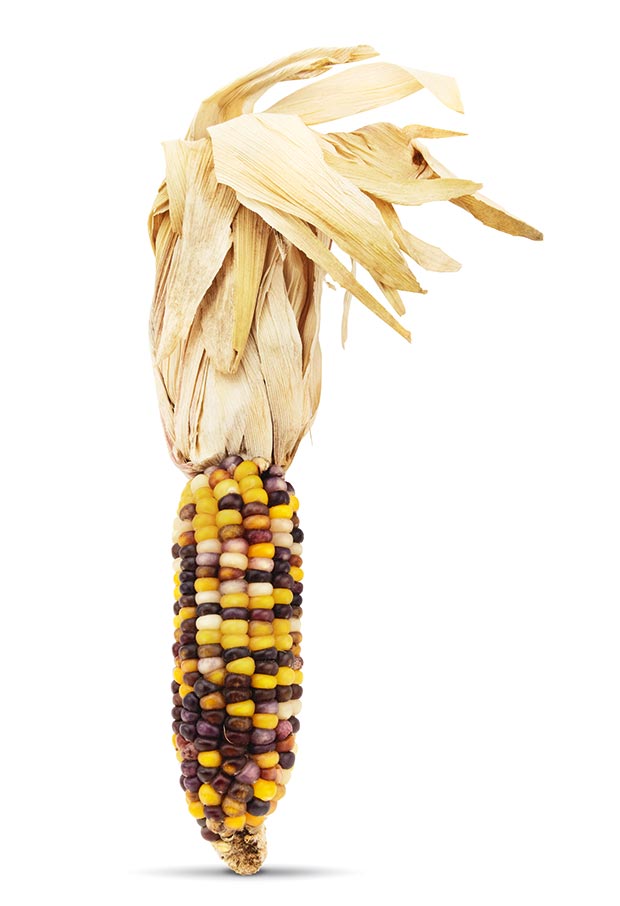
There’s very sweet corn and then there’s good corn.
Words: Jenny Somervell
Every spring I sow sweetcorn and it’s a non-negotiable task. No matter what else I have going on, it all falls to the bottom of the priority list. Corn is king.
As I sow, I can almost taste the hot, butter-covered cobs. I visualise the giant, healthy corn plants, reaching to the sky, their wavy leaves not quite concealing the swelling ears of corn, ripe with deliciousness. There’s not a pest in sight.
My heavenly vision is delightful, but the road to achieving it can be rocky. Our North Canterbury garden has a marginal climate for growing corn. Half the time my transplants are hit by frost, even as late as November.
If they survive that, they are likely to be bowled over in a good Nor ‘wester.
However, I have caught the corn bug. It’s a life-long affliction and I’m going to do my best to infect everyone.
I’m not talking about varieties like the the sickly super-sweet types. My corn is the fuller-flavoured, colourful, more adaptable heirloom varieties. You can taste the difference.
The first thing you need to know about good corn
My love affair with corn began in my teenage years on my family’s Hawkes Bay dairy farm. The crop was below the cowshed, and frequently sluiced with effluent when the shed was washed out.
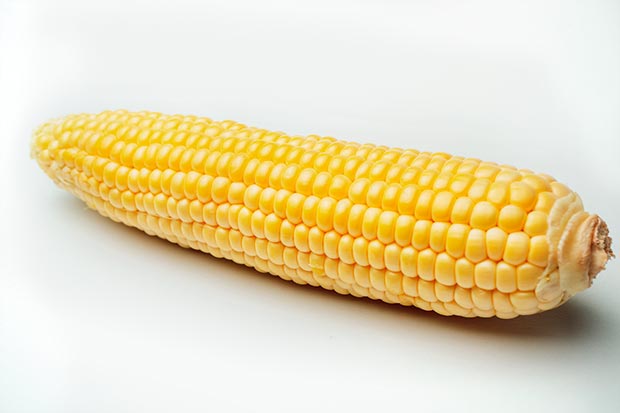
All that manure and water meant we harvested barrowloads of corn.
The plants grew to 1.8m+, producing fat, juicy ears. What we couldn’t eat off the cob was turned into delicious corn fritters.
By accident, I had stumbled on one of the keys to great corn. It likes fertile, deeply-dug, well-drained but moisture-retentive soil in a sunny position.
Most corn plants will reach 1.2-2m high, depending on the variety and growing conditions. But they’re all hungry for nutrients.
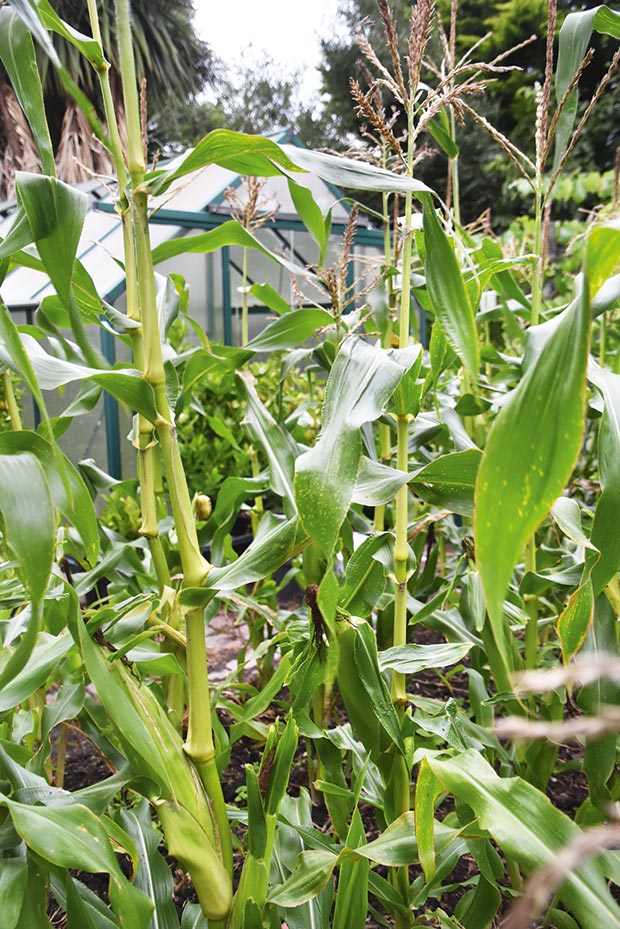
It’s hard to overdo the fertiliser. It can be quite the challenge if you don’t have a cowshed uphill from your garden.
Dig in plenty of organic matter, as corn will use it all in the three monthsor so it takes to mature.
Time and temperature
Corn requires a minimum of 12°C to germinate and its preferred growing temperature is 15-35°C. ‘Super sweet’ varieties need warmer temperatures for germination, a minimum of 14-16°C.
If sown when it’s too cool, seed will rot in the ground. This means if you’re sowing directly into soil, it is too cool until November-December in my Canterbury garden, or October in northern areas.
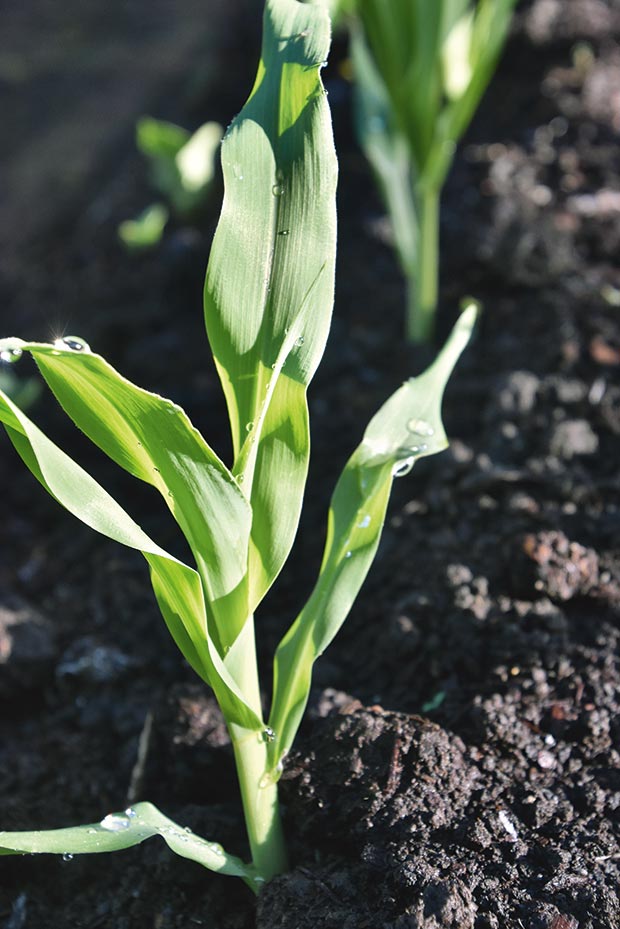
A young Golden Bantam corn plant.
Germination can be erratic. Fresh seed is best as viability declines after a year. Sow seed 5cm deep, in rows 75cm apart. Thin to 30cm when seedlings are 5-10cm high. Plant or sow in blocks to aid wind pollination.
In our frost-prone Canterbury climate, I start the seed on a heated bed in our greenhouse, in cavity trays, as the roots resent transplanting.
The timing is tricky. Sow too soon and the young plants sulk in the cold or have to be held in pots too long before it is warm enough to plant out. I cover my bases and make several sowings (seed is cheap!) ensuring at least one of them will avoid the wind, frost or hail that may try to kill them.
JENNY’S TRICKS TO STRONG CORN PLANTS
• Plants are vulnerable to wind until they form buttress roots. After planting seedlings or when plants are about 20cm tall, I ‘hill up’ soil around the stems with organic-rich soil to encourage buttress roots. These hold plants firmly in the ground and also improves water uptake. I tend to redo this each time I weed, as pest birds like to scratch away the ‘hills’.
• Corn needs plenty of regular moisture. A good soaking once or twice a week is better than a light sprinkling.
• Mulching in the first month will help conserve water.
• As the silks form, plants may need a side dressing of fertiliser or manure.
POLLINATION TIPS
Pollination of corn in the home garden can be tricky. When the feathery male flowers or tassels emerge from the top leaves of the stem and start to grow away and open out, they are about to shed pollen.
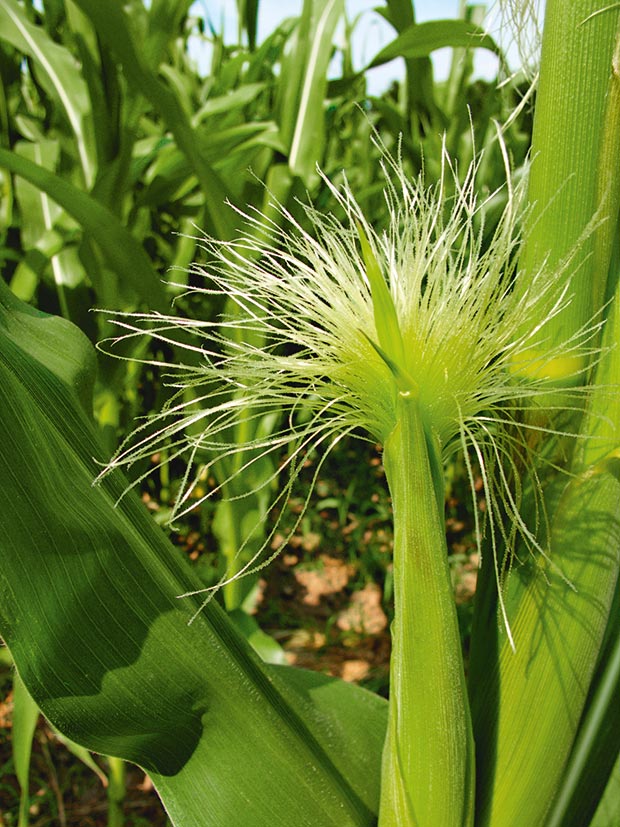
Tassels of corn during the pollination phase.
Clouds of pollen are released onto the female tassels or silks below. These are the clusters of pale green strands on the end of cobs. Each is attached to a single grain and becomes sticky before pollination.
To get full cobs, each silk must be pollinated. We always have a few cobs with missing kernels down the length of the cob where they weren’t fully pollinated.
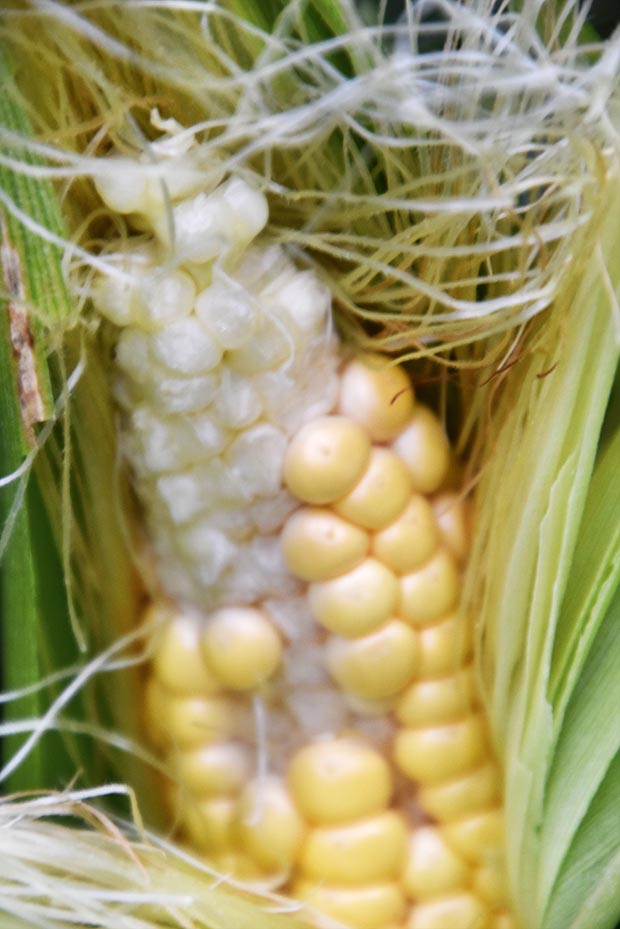
A cob with missing kernels where pollination was incomplete.
To help pollination:
• plant in blocks, rather than rows;
• when plants start shedding, water with a hose or sprinkler in the early morning;
• use a paintbrush to transfer pollen from the feathery male tassels to the female flowers (silks);
• in calm weather, gently tap or shake the stems about mid-morning.
PICKING THE PERFECT CORN
Sweetcorn needs to be harvested before it is fully mature. Judging when is the right time for perfect corn is tricky.
Ideally, you’ll see the silks wither and turn golden-brown and the cobs will be plump and firm.
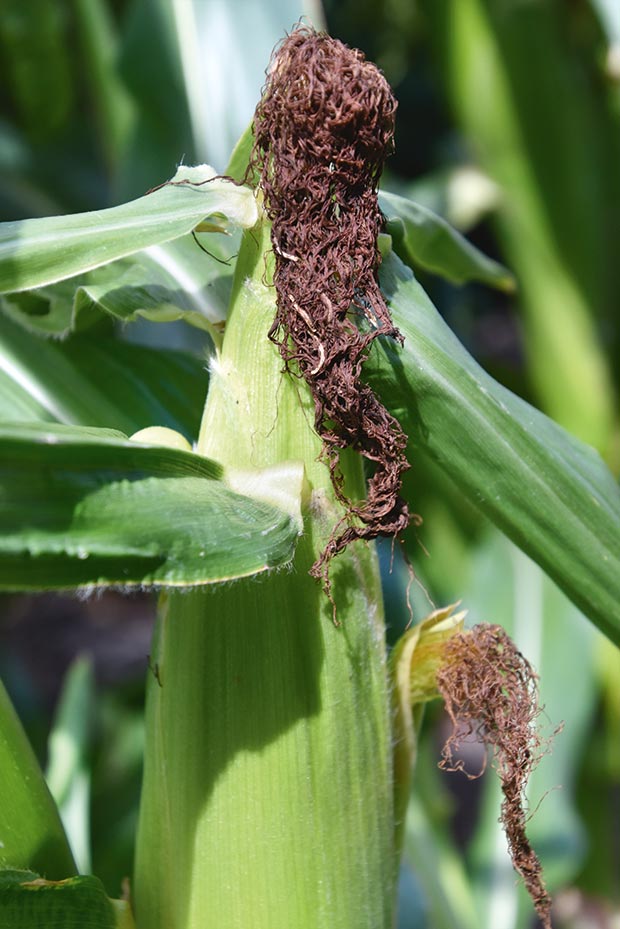
Mature Golden Bantam corn with brown, withered silks.
You can take a look to check on the cobs. Part the green sheath, then squeeze the grain between your thumbnails:
• if it exudes a milky fluid (called milk stage) it is ready;
• a clear juice means the corn is immature;
• a thick and creamy juice means it is past its best.
If it is not ready, opening the cob in this way makes it more prone to insect damage and drying out. You can try tying a soft garden tie around it to keep the sheath secure.
To pick, hold the solid stem upright and break off the cob with a sharp downward jerk.
ALWAYS EAT IMMEDIATELY
Corn loses flavour very quickly, within minutes of picking as the sugar in the kernels starts to turn to starch. It is best picked just before use. Have a pot or water or other cooking method hot and ready to go before you go out to pick.
Love this story? Subscribe now!
 This article first appeared in NZ Lifestyle Block Magazine.
This article first appeared in NZ Lifestyle Block Magazine.
